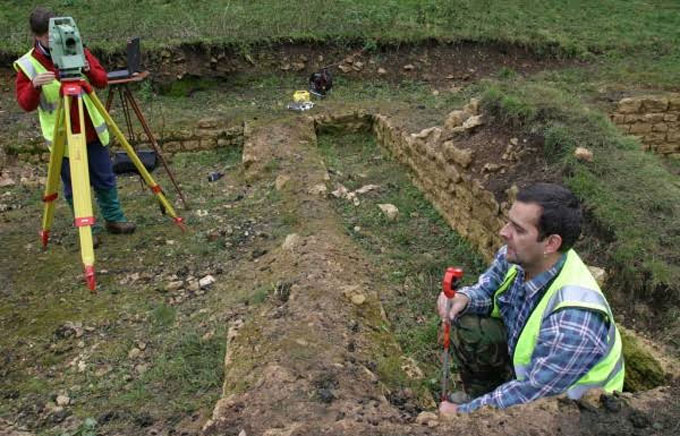
Linear Measurements : What is it and How is it Used in Surveying
Surveying is a vital and preliminary part of any construction project. It involves examining and recording the characteristics of the designated area or a certain piece of land, so that a map, plan or detailed description of it can be furnished.
It involves measuring work, mostly, and the linear measurements, that is, measuring the straight-line distance between point A and point B, can be carried out via three main ways: Direct, Electromagnetic or Optical. We will talk about the direct method today, which basically is employing some physical instrument like a chain or string or tape measure to gauge the distance between two points.
Surveyors may use the following ways to directly measure a linear distance: Pacing, Passometer, Pedometer, Odometer, Chaining. Let us discuss them in detail below.
1. Pacing Method: Pacing is the most ancient and basic ways of measuring a linear distance in surveying. It involves walking in a straight path from point A to point B and counting the steps, and then multiplying the number of steps by the average step length.
Generally, the average step length is taken as 80 cm or in some places, 2.5 feet. However, the surveyor must learn to keep his step length as close to the average as possible via practice if s/he were to employ this method in direct surveying.
Needless to say, this method can be fairly inaccurate. Even by good practice, some 1% error margin cannot be negated. Also it can get tiring and the error margin increases with longer distances. Also if the ground is uneven or sloped, the paces will inevitably vary. Thus the Pacing method is best reserved for use when you?re doing basic reconnaissance and/or lacking proper measurement tools.
2. Passometer Method: This is an electronics-assisted upgrade on the pacing method. The Passometer is an electromechanical portable device, which can sense the body?s rhythmic movements and calculate the number of steps taken while walking or running. Similar to pacing method, the distance is calculated by the number of paces shown in the passometer and the average length of the surveyor?s strides.
3. Pedometer Method: A pedometer is also an electronic upgrade of the pacing method. Like passometer, the pedometer is an electronic gadget and is small enough to be carried around in a pocket or clipped to the waistband. However, unlike passometer, it can measure the distance the user has traversed. This is done by sensing the movements of the user?s hips and hands while walking. However, an informal calibration is required to get error-free measurement.
No calculation is required in this method since this device tells the distance walked directly. Since it relies more on rhythmic motion sensors, the pedometer is more accurate over longer distances than shorter. Nowadays, there are pedometers available in the market which uses GPS or cell towers to indirectly measure distance travelled, thus eliminating the need for careful calibration.
4. Odometer Method: An odometer is essentially a mechanical or electromechanical device used to count the number of revolutions of a wheel. We see this mostly used in vehicles in the form of speedometers. Basically, it is calibrated beforehand that how much distance a wheel will travel if rolled forward fully once, i.e. its circumference. Then the wheel and pedometer assembly is rolled forward from point A to point B, and then it is multiplied by how many times it has rotated, measured by the odometer, and thus the total distance traversed by the wheel is found. (In a speedometer it is further divided by time to get the speed of the wheel).
Note that unlike pacing methods and its electronic variants, this can be used to accurately measure distances over any direction or slopes, not just the horizontal ground. However over rugged terrain the pedometer produces erroneous results and may even damage the device.
Interestingly, the odometer was invented a long time ago. History tells us that as far back greek and roman times, mechanical pedometers were in use. A bigger, horse-drawn version of this was found in ancient China as well.
5. Chaining Method: The chaining method is one of the direct methods used in surveying linear distances. In this, a chain, rope or cord is laid straight from point A to point B and then the length of the chain or cord is measured via other methods. In case of long distances, a chain of precise length is used multiple times to measure the distance; this is called Ranging. In this, points are fixed for each time the chain was fully used and then the number of points are multiplied by the chain?s length to find out the linear distance.


